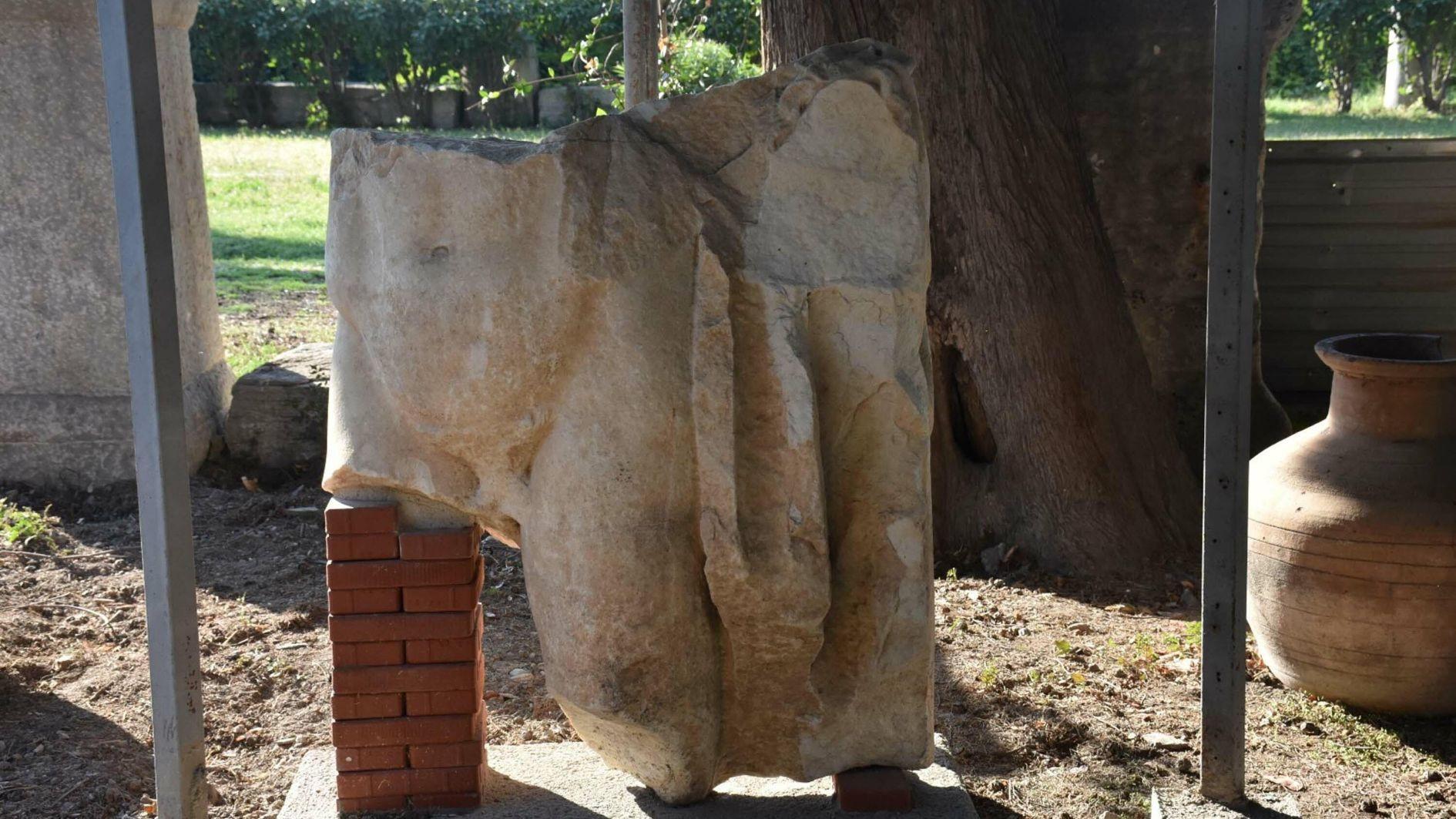1,800-year-old statue unearthed at Smyrna
İZMİR

Excavations at the western province of İzmir’s ancient city of Smyrna have brought to light a remarkable 1,800-year-old Roman-era statue, standing 110 centimeters tall and 90 centimeters wide, offering new insights into the region's rich historical legacy.
Professor Akın Ersoy, head of the excavations, said that research is ongoing to determine whether the statue depicts an emperor or a god. “It is highly likely that the statue belongs to Emperor Hadrian, but if it represents a divine figure, it could also be Zeus,” he said. “In our discussions with colleagues, we also considered the possibility of it being Alexander the Great, since he is one of the founders of İzmir.”
Located in the city center, the ancient site includes one of the largest agoras of the classical period and one of the biggest theaters in the Mediterranean region. Built by Alexander the Great on a 193-hectare area stretching from Kadifekale to Kemeraltı, the city has yielded thousands of artifacts from different eras. In 2020, Smyrna was added to UNESCO’s World Heritage Tentative List as part of the “Historic Port City of İzmir.”
The recently discovered statue, made of dolomite stone and dating back to the 2nd century A.D., is missing its upper half. “It’s an 1,800-year-old piece larger than life-size,” Ersoy said. “We assume it once stood in a niche inside the stage building in a striking position. The preserved section measures 90 centimeters wide and 110 centimeters tall.”
Ludovic Laugier, a sculpture expert and curator at the Louvre Museum in France who is assisting in identifying the piece, said, “At first, I thought it might depict Hercules due to the body’s structure, but then I began to consider it could be a statue of Zeus. The Medusa figure on its hand represents a protective symbol associated with Zeus. It’s a rare and high-quality sculpture, similar to those seen in European museums and finding such a piece in a theater setting is quite unusual.”















